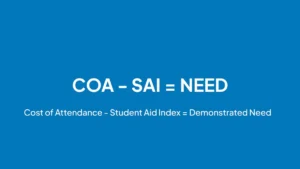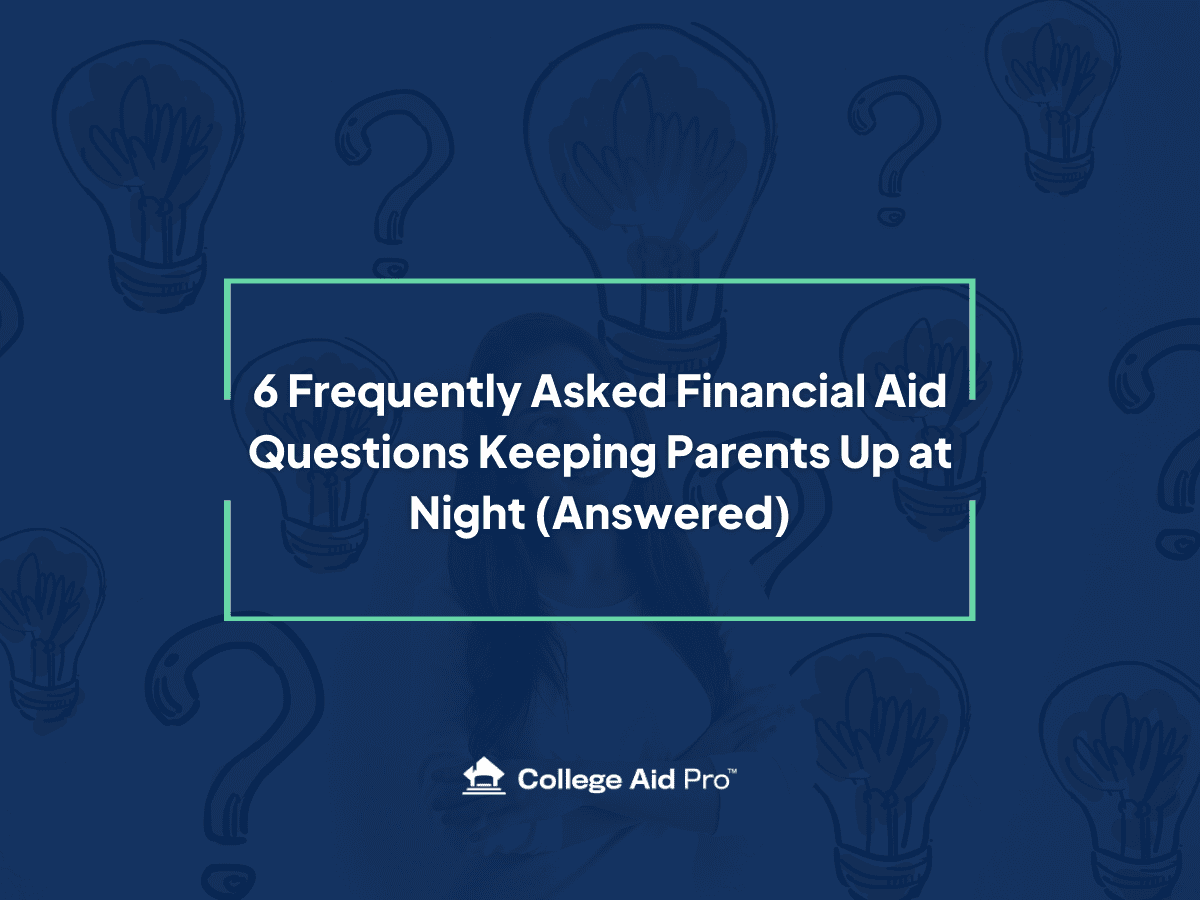 Understand the Student Aid Index (SAI): your quick guide to what colleges think you can pay
Understand the Student Aid Index (SAI): your quick guide to what colleges think you can pay
Heard “Expected Family Contribution” (EFC) tossed around on TV or social and wondered what it actually means for your family? Plot twist: that term retired. The modern version is the student aid index (SAI)—and understanding it is step one in building a college plan that doesn’t wreck your budget.
What is the Student Aid Index?
The student aid index is a number calculated from your FAFSA that colleges use to gauge how much financial need your student has. Lower SAI = higher demonstrated need. It’s an index, not a bill, not a promise, and definitely not your final price. Think of it like a yardstick schools use to line up aid.
A couple of quick truths:
-
SAI replaced EFC starting with the 2024–25 FAFSA.
-
Your SAI can be negative (as low as –1,500). That just signals especially high need.
-
You’ll file the FAFSA every year, so your SAI can change with income, assets, or family details.
How the SAI is calculated (plain-English version)
When you submit the FAFSA, you and your student share financial information such as income and certain assets, plus some household details. The Department of Education runs that data through formulas to produce your SAI. With recent FAFSA updates, much of the tax info transfers directly from the IRS (with your consent), which makes the process shorter and less error-prone.
Myth-buster
Families often think SAI = what we’ll pay. Nope. Your SAI is a measuring stick, not the final bill. Your actual out-of-pocket depends on how generous a college is with need-based aid, whether you receive merit aid, and how loans factor into the package.
The core equation colleges use

Here’s the basic aid math most financial aid offices follow:
Cost of Attendance (COA) – Student Aid Index (SAI) – other aid = Financial Need
“Other aid” can include state grants, outside scholarships, or employer benefits. The resulting financial need is the gap a school tries to fill with a mix of grants, scholarships, work-study, and—if necessary—loans. Each college decides how much of your need it will meet, and the mix can vary widely school to school.
A quick example
If a college’s COA is $60,000 and your SAI is $30,000, your financial need is $30,000. One college might plug most of that with grants and work-study; another might lean more on loans. Same student, very different bottom lines—this is why comparing offers matters.
What if my Student Aid Index is too high? Find Solutions Here.
What changed from the old EFC days?
-
Clearer name, clearer expectations. “Student Aid Index” helps families understand the number is used to determine eligibility for aid, not a bill they’re expected to pay.
-
Updated formula and Pell rules. FAFSA Simplification reworked the need analysis and expanded pathways to Pell Grant eligibility based on family size and federal poverty guidelines.
-
Negative SAI. The minimum can be –1,500, which signals significant financial need.
-
Smoother process. The form is shorter and draws verified tax data directly, helping reduce mistakes and processing snags.
If you own a small business or family farm, have a blended household, or other unique factors, it’s worth double-checking current rules to be sure you’re reporting correctly. Nuances can change your SAI.
How to use your student aid index to your advantage
1) File the FAFSA—every year.
It’s the only way to generate an official student aid index and be considered for federal, state, and most institutional aid. After processing, review your FAFSA Submission Summary to see your SAI and fix any flagged items.
2) Start early (sophomore/junior year).
If you’re building a college list now, estimate your SAI to understand using a software like MyCAP to see your need profile and balance your list with schools known for generous need-based aid and those that offer strong merit aid.
3) Compare offers side-by-side.
Use the MyCAP college planning software to see how much of your need each school meets—and how much is covered with grants vs. loans. Focus on net cost.
4) Appeal when life happens.
Job loss, medical expenses, or other changes that aren’t reflected on your FAFSA? Ask the financial aid office about professional judgment. With documentation, schools can reassess and sometimes improve your award.
5) Stack scholarships.
Need-based aid and merit awards can work together. Search for institutional scholarships, local awards, and national programs—especially those that renew across four years.
FAQs parents ask us every week
Does a lower SAI always mean a lower price?
Not automatically. A lower student aid index increases eligibility for need-based aid, but each college decides how much of your need it will meet—some cover a lot with grants, others expect more loans. That’s why award comparison is essential.
Why didn’t we get an SAI?
If your FAFSA is missing something (like family size or a signature) or has conflicting data, your SAI might not calculate. Fix the flagged items on your FAFSA Submission Summary, resubmit, and check again.
Where do I find our SAI?
On your FAFSA Submission Summary after the FAFSA is processed. Remember, it’s a measuring stick for aid eligibility—not your final price.
Can we “lower” our SAI?
You can’t game the formula, but you can plan. Saving patterns, timing, and understanding which assets count can all influence your future SAI. And if circumstances change, appeal.
TL;DR—master the student aid index to pay less for college
The student aid index is the first puzzle piece in college affordability. File the FAFSA every year, know your SAI, compare offers carefully, and appeal when appropriate. Pair need-based aid with merit and outside scholarships to drive your net price down—and make a choice that fits your budget and your student.
Want help decoding your Student Aid Index (SAI) and maximize financial aid?
Become a Premium MyCAP Member today to preview your Student Aid Index (SAI) in MyCAP before you file your FAFSA or CSS Profile to spot errors, compare scenarios, and find ways to improve your aid. Search every scholarship at every college, and see what college will actually cost your family. All for $4.99/month—cancel anytime.




